 Mallard and Cinnamon Teal
Mallard and Cinnamon Teal
The winds were just beginning, but getting strong when I went for an afternoon walk at San Joaquin Wildlife Sanctuary on October 21th. We almost got blown away. At least it felt like that. But birding in bad weather is not necessarily bad birding. (You just have to make sure it is safe to bird wherever you are birding in good or bad weather.) We talked with people who said there was nothing out, but we saw some good birds.
Above is a Mallard and a Cinnamon Teal. I like this picture for a few reasons. One, the colors are good together. The green on the Mallard, the reddish-brown Cinnamon Teal, and the blue water. I also like that it shows both birds in action. Both are dabblers. They get their bills in the water and chomp around for something to eat. Sometimes in deeper water, they lean down into the water so much that you only see their tails sticking out of the water. This photo shows their typical behavior of dabbling in shallow water. The picture also shows a significant size difference. Is this an optical illusion like the size of the pitcher on the mound during a televised baseball game or is it a real size difference? It is a real size difference. A Mallard is an average of 23" long with a 35" wing span. A Cinnamon Teal is only an average of 16" long with a 22" wing span. That is a difference of at least 7 " in length and 13 " for the wing span. The Mallard is over a half a foot longer than the Cinnamon Teal. There are several kinds of teals. Cinnamon Teal, Green-winged Teal, Blue-winged Teal and several more exotic kinds. Note that all teals are small ducks.

Cinnamon Teal dabbling in the water and mud for vegetarian goodies. Notice even the eye is red.
Notice both are in breeding plumage. It is October and both have a breeding season that begins in October. The Cinnamon Teal from October through June and the Mallard from October through May. Not all ducks are in breeding plumage at this time of year, but these two are. For me, getting a nice picture of a Cinnamon Teal without its head in the water has been a challenge. I know they have to come up for air sometime. I figure that one of my goals for this fall/winter will be to get a shot or three of a Cinnamon Teal sitting with its head up out of the water. (Yes, I set goals for walks, and goals for seasons. It gives direction to my birding.)
 Black-necked Stilt--Himantopus mexicanus making strides across the duck pond. Notice all the little waves from the Santa Ana winds.
Black-necked Stilt--Himantopus mexicanus making strides across the duck pond. Notice all the little waves from the Santa Ana winds.
Now here is a
Black-necked Stilt--Himantopus mexicanus going for a walk. I like
Black-necked Stilts. A pair had an unsuccessful nest near the bridge at Bolsa Chica this last summer. It was in a very public place and was probably photographed more than the
Killdeer--Charadrius vociferus nest by the path at
San Joaquin Wildlife Sanctuary. The
Black-necked Stilt is a common shore bird. Its body is only 14" long and it has a wind span of only 29" but its legs are very long and red. It gives it height. The legs are very long in relation to its body and that difference is where the name comes from--I am guessing. It kind of looks like what it is, a small bird on stilts. There are often
Black-necked Stilts in the first two ponds. The wind blew steadily, and every once in a while the gusts came that made us wonder if we would get blown into the ponds. The birds were laying low in the ponds as the wind blew up on the paths, but they still were getting some wind.

Ruddy Duck Female at San Joaquin Wildlife Sanctuary
There were about 10 or so Ruddy ducks in the second pond on the right. You can always tell them from a distance--and they are usually at a distance--by of their tails. They are stifftail ducks and their tails are at about a 45% angle to their bodies instead of being on the same plane as the body. The female has a line through her cheek. The male has a very white cheek. During breeding season, the male Ruddy has ruddy or reddish body and head and a bright blue bill. He is a is very flashy fellow. Their breeding season runs from March through August. Very different from the
Mallard's and the
Cinnamon Teal's breeding seasons. The Ruddy only over laps two months. At a length of 15" and a wing span of 18.5" it is not the biggest duck in the pond. They do tend to be in deeper water and in groups swimming rather than wadding. They are often off away from the more travelled area and often sleeping. Look for the 45% tail and the white cheek of the male.

White-faced Ibis, Cinnamon Teal--Anas cyanoptera, and other ducks
Notice how small the White-faced Ibis is. I first noticed it not because of the size but because of its black color with the green sheen. I didn't notice it until we were on our way out because its head was down the first time we passed it. In the pictures I took on the way in, it can clearly be seen in deep water with its head down. The White-faced Ibis is 23 " long and has a 36" wing span. A Mallard is an average of 23" long with a 35" wing span. It is the legs and color and the shape of the long, down-curved bill that draw the eye. But if the bird is foraging in deeper water and has its bill in the water, it just looks like another duck from behind--except for the color. I was looking for an Ibis, since I knew they were here. I just forgot to look at the size in relation to everything else on the pond. So remember the White-faced Ibis is the about the same size as a Mallard. Check groups for the black with the green sheen. In deep water with its bill in the water, you won't have the characteristic legs and bill to id it, and you might not know what it is you are really seeing. Look for the black with the green sheen, and then watch for it to come up for air.

American Avocet--Recurvirostra americana in Winter Plumage. Ripples in the water from the wind.
The American Avocet--Recurvirostra americana has a light reddish brown head in spring and summer and is totally black-and-white in the late fall and winter. It is 18" long and has a 31" wing span. It moves its head back and forth through the water as if it is panning for gold. They tend to hang out with other American Avocets--Recurvirostra americana, Black-necked Stilts--Himantopus mexicanus, Dowitchers, and other shore birds with somewhat longer legs in the shallows, but often not the really, really shallow places. They are often seen in pairs during mating season.

Green-winged Teal--Anas crecca in Breeding Plumage from October until June
So how can I tell that this bird with half its head in the water is a Green-winged Teal--Anas crecca? Well, first of all Green-winged Teals are dabbling duck like the Mallards, the Cinnamon Teal, and the Blue-winged , and this bird is dabbling. Second, the green eye markings and the rufous head. Then the gray color on the upper back and sides below the wing. This is the smallest teal at 14" long and a wing span of 23".

Blue-winged Teal--Anas discors
Another dabbler braving the winds was the
Blue-winged Teal--Anas discors is 15.5" in length and has a wing span of 23". The third teal I saw that day. So if this is a
Blue-winged Teal--Anas discors, where is the blue on its wing? Believe it or not, both the Blue-winged Teal and the
Cinnamon Teal--Anas cyanoptera both have blue wings. The blue is just on the shoulder and the other feathers hide the blue when the wings are folded closed. If it should stretch its wing or fly, you would see its blue shoulder. So perhaps we should call this teal the Blue-Shouldered Teal. Notice the crescent by the bill. That crescent is diagnostic. This bird is on its way to full breeding plumage. Breeding season is November through June.

Great Blue Heron--Ardea herodias trying to be inconspicuous among the reeds.
As we headed for the second pond, we saw a
Great Blue Heron--Ardea herodias standing in the path where three ponds come together toward the start of the trail near the Audubon House. It was out for a walk. This is at least the second time we have see a
Great Blue Heron walking there. As we walked closer, the
Great Blue Heron disappeared into the reeds. When we reached the reeds where he had disappeared, there he was trying to hide. At 46" long with a 72" wing span, that is no easy task.
Remember out in the field, birds can look very different than in the field guide. You may not be able to see the whole bird. The light or angle may not be like the guidebook. And finally, the depth of the water when you are looking at water birds can affect how you are interpreting what you see. You might not know the depth of the water. You might think the bird is bigger than it is. Check the size and color and remember there may be long legs hidden in the water. There could be a White-faced Ibis among the ducks.
Birds in Order of Size, Smallest to Largest
Bird length/wing span/ breeding season
Ruddy Duck 15" long and a wing span of 18.5" Breeding March through August
Cinnamon Teal 16" long with a 22" wing span Breeding October through June
American Avocet 18" long and has a 31" wing span Breeding March through August
Mallard 23" long with a 35" wing span Breeding October through May

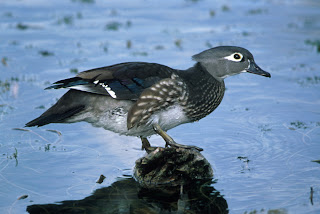
 Male and Female Wood Ducks. Courtesy of US Fish and Wildlife Service
Male and Female Wood Ducks. Courtesy of US Fish and Wildlife Service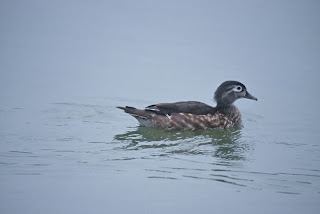 Female Wood Duck Courtesy of US Fish and Wildlife Service
Female Wood Duck Courtesy of US Fish and Wildlife Service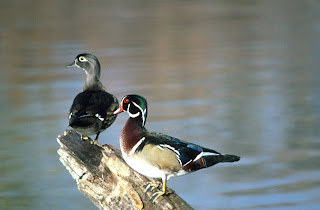











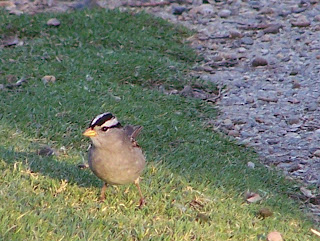




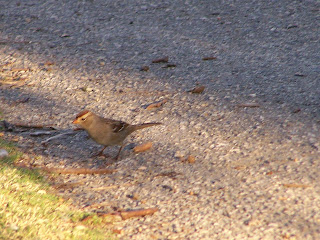
 Immature White-crowned Sparrow with brown stripes instead of black stripes
Immature White-crowned Sparrow with brown stripes instead of black stripes White-crowned Sparrow at Huntington Central Park on the West Side
White-crowned Sparrow at Huntington Central Park on the West Side


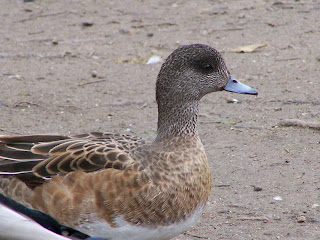




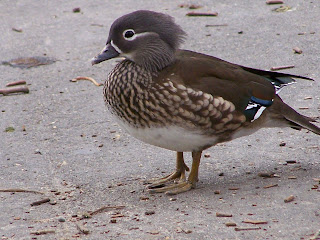 Female Wood Duck
Female Wood Duck


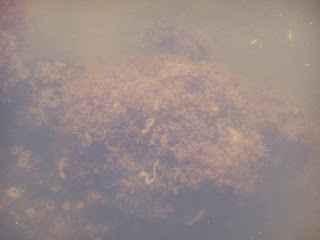

 Where an
Where an 








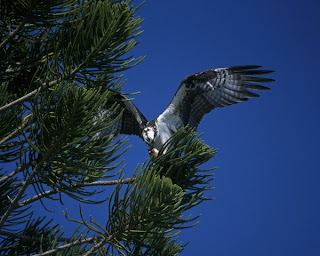 Osprey in pine tree-- Courtesy of the US Fish and Wildlife Service
Osprey in pine tree-- Courtesy of the US Fish and Wildlife Service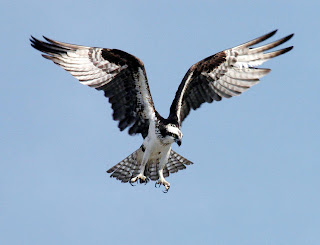
 Osprey on the nest at NASA. (Courtesy of NASA )
Osprey on the nest at NASA. (Courtesy of NASA )  Immature Osprey at
Immature Osprey at 












